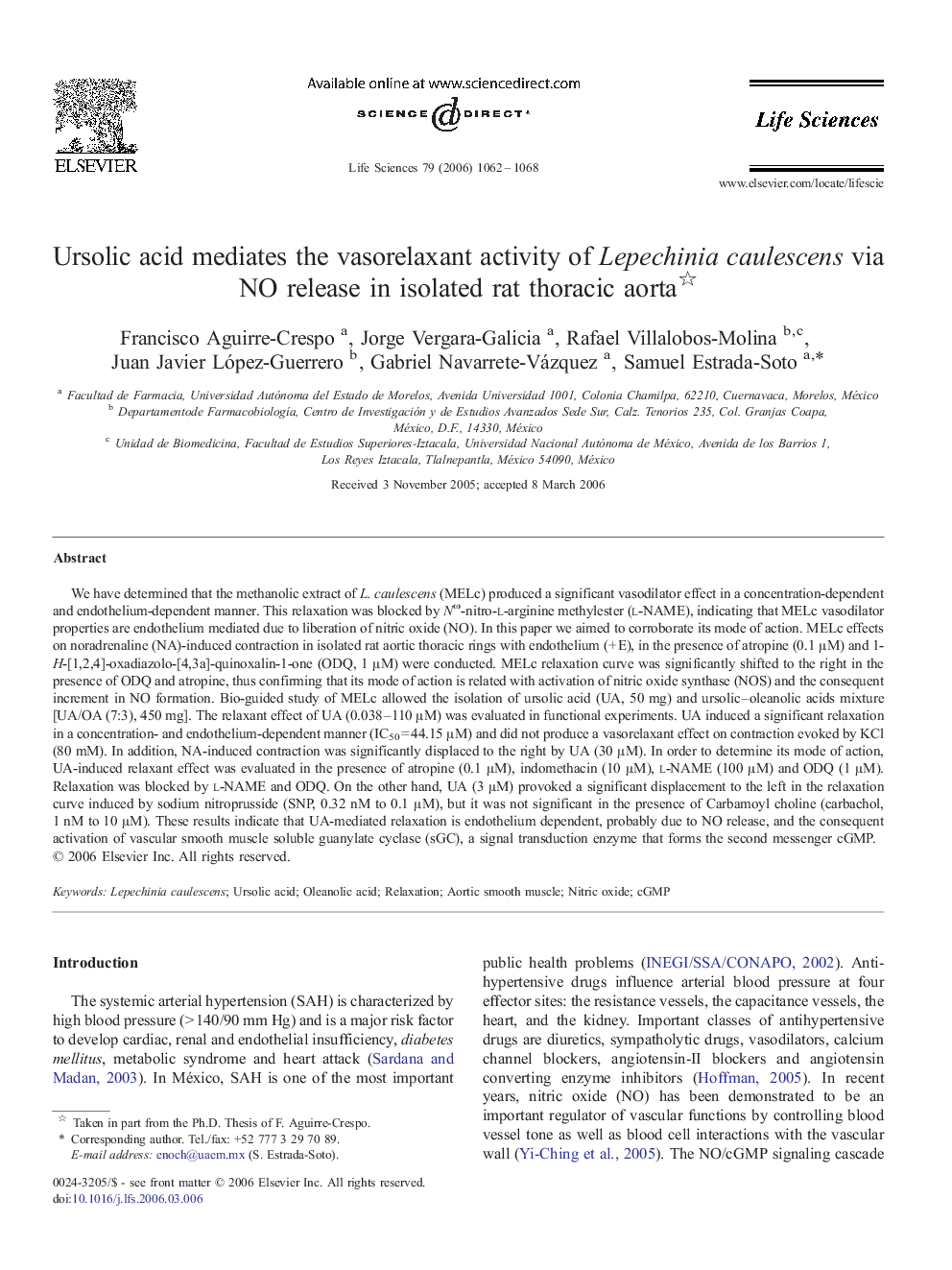| Article ID | Journal | Published Year | Pages | File Type |
|---|---|---|---|---|
| 2554058 | Life Sciences | 2006 | 7 Pages |
Abstract
We have determined that the methanolic extract of L. caulescens (MELc) produced a significant vasodilator effect in a concentration-dependent and endothelium-dependent manner. This relaxation was blocked by NÏ-nitro-l-arginine methylester (l-NAME), indicating that MELc vasodilator properties are endothelium mediated due to liberation of nitric oxide (NO). In this paper we aimed to corroborate its mode of action. MELc effects on noradrenaline (NA)-induced contraction in isolated rat aortic thoracic rings with endothelium (+ E), in the presence of atropine (0.1 μM) and 1-H-[1,2,4]-oxadiazolo-[4,3a]-quinoxalin-1-one (ODQ, 1 μM) were conducted. MELc relaxation curve was significantly shifted to the right in the presence of ODQ and atropine, thus confirming that its mode of action is related with activation of nitric oxide synthase (NOS) and the consequent increment in NO formation. Bio-guided study of MELc allowed the isolation of ursolic acid (UA, 50 mg) and ursolic-oleanolic acids mixture [UA/OA (7:3), 450 mg]. The relaxant effect of UA (0.038-110 μM) was evaluated in functional experiments. UA induced a significant relaxation in a concentration- and endothelium-dependent manner (IC50 = 44.15 μM) and did not produce a vasorelaxant effect on contraction evoked by KCl (80 mM). In addition, NA-induced contraction was significantly displaced to the right by UA (30 μM). In order to determine its mode of action, UA-induced relaxant effect was evaluated in the presence of atropine (0.1 μM), indomethacin (10 μM), l-NAME (100 μM) and ODQ (1 μM). Relaxation was blocked by l-NAME and ODQ. On the other hand, UA (3 μM) provoked a significant displacement to the left in the relaxation curve induced by sodium nitroprusside (SNP, 0.32 nM to 0.1 μM), but it was not significant in the presence of Carbamoyl choline (carbachol, 1 nM to 10 μM). These results indicate that UA-mediated relaxation is endothelium dependent, probably due to NO release, and the consequent activation of vascular smooth muscle soluble guanylate cyclase (sGC), a signal transduction enzyme that forms the second messenger cGMP.
Keywords
Related Topics
Health Sciences
Medicine and Dentistry
Cardiology and Cardiovascular Medicine
Authors
Francisco Aguirre-Crespo, Jorge Vergara-Galicia, Rafael Villalobos-Molina, Juan Javier López-Guerrero, Gabriel Navarrete-Vázquez, Samuel Estrada-Soto,
